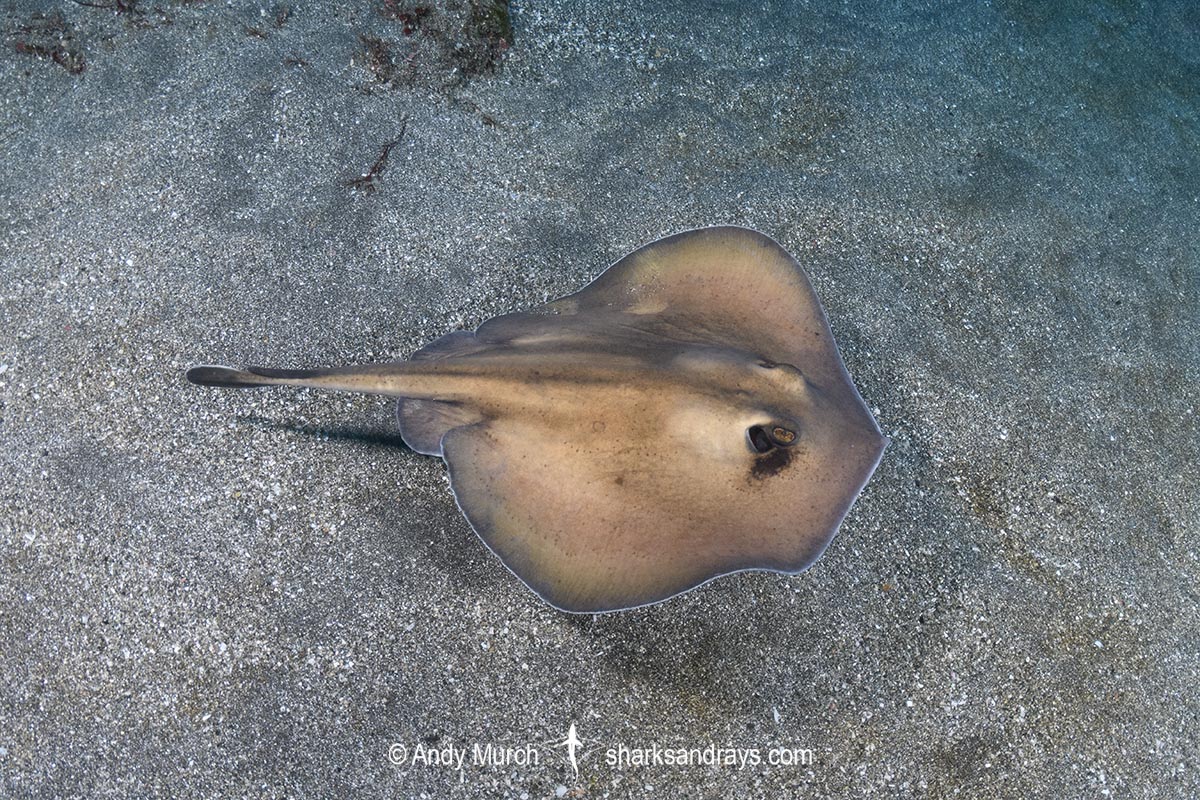Common names
Sepia Stingray, Oriental Stingaree.
Binomial
Urolophus aurantiacus
Identification
A small stingaree with a sub-circular or rounded kite-shaped disc that is slightly wider than long. Snout obtusely angular, sometimes with a small acutely pointed tip. Anterior margins of disc mildly convex, apices broadly rounded. Disc completely smooth.
Eyes large; orbit length 0.28-0.36 x snout length. Spiracle origin below mid-eye. Mouth small. 7 oral papillae on mouth floor; 5 centrally and 2 laterally. Nasal curtain skirt shaped, extended posteriorly into a distinct lobe, posterior margin weakly fringed. No fleshy lobe on each nostril.
Tail long and relatively broad-based, length 0.72-0.84 x disc length. Dorsal fin absent. Caudal fin relatively short and deep.
Colour
Dorsum light to dark greyish brown with no distinct markings except for a dark stripe along midline and tail. Area around eyes and dorsal disc margin sometimes dusky. Ventrum white with a broad, dark margin.
Size
Total length at least 40cm. Length at birth approximately 8cm.

Conservation Status
VULNERABLE
When caught in trawl and gillnet fisheries the oriental stingaree is retained for fish meal. Fishing pressure is high across the species’ range. Although this species may have some refuge from fishing pressure in inshore rocky habitats, and in areas with seasonal trawl bans, the Oriental Stingaree is thought to have undergone a population reduction of 30–49% in the last four decades.

Habitat
Tropical to temperate seas. Found on sandy and muddy substrates at deeper depth, and rockier substrates or sandy areas adjacent to rocky reefs at shallower depths. The sepia stingray was previously considered to be a deepwater species occurring at 155-205m but there are numerous reports of sightings in 10-30m by divers in Japan.
Distribution
Northwestern Pacific. Taiwan, mainland China, South Korea, and southern Japan where it is quite common.
Reproduction
Viviparous, probably with trophodermic nutrition. 1-2 pups per litter. Gestation approximately 12 months.
Diet
Diet unrecorded.
Behavior
Poorly known.
Reaction to divers
Skittish but approachable with non-threatening movements. Will bolt if approached too closely but does not travel far before resettling.
Diving logistics
The sepia stingaree is relatively common on shallow reefs in southern Honshu, Japan. We (big Fish Expeditions) regularly see this species during our Japan Shark Safaris at dive sites in Chiba. It is probably quite common along the entire south coast of Honshu.
What’s new
View our full list of updates
Similar species
The sepia stingray is the only stingaree that occurs in the northern hemisphere.






